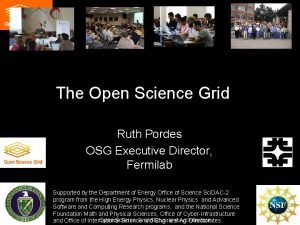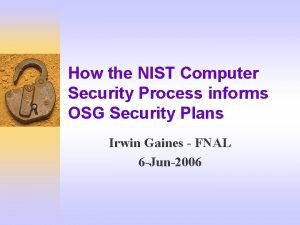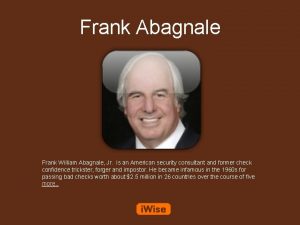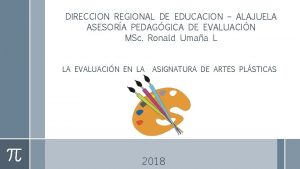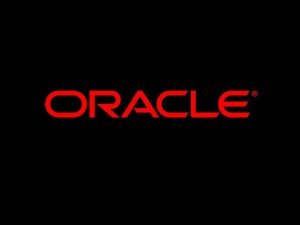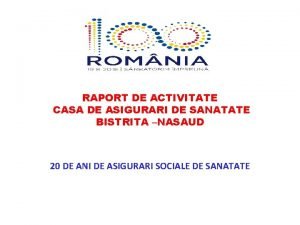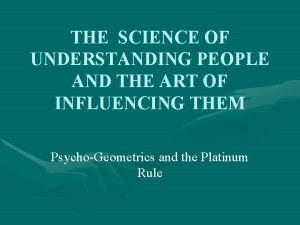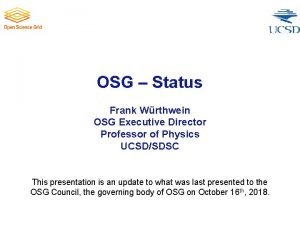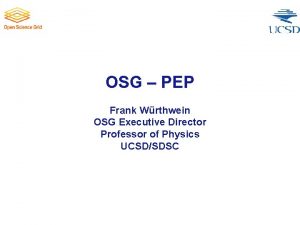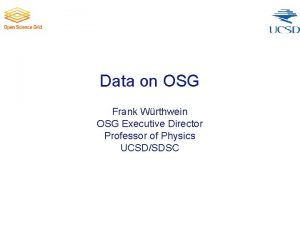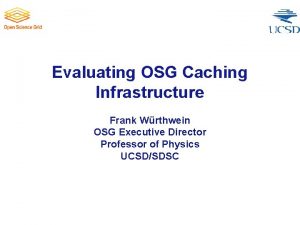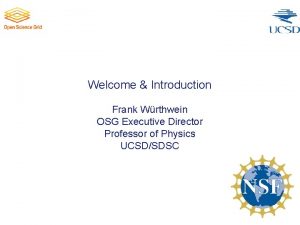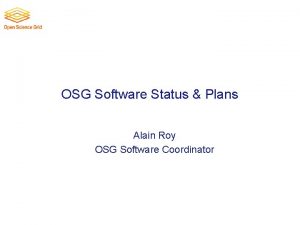OSG Status Evolution Frank Wrthwein OSG Executive Director










- Slides: 10

OSG – Status & Evolution Frank Würthwein OSG Executive Director Professor of Physics UCSD/SDSC

What is OSG ? • OSG is a consortium dedicated to the advancement of all of open science via the practice of Distributed High Throughput Computing, and the advancement of its state of the art. • It is a collaboration between IT, software, and science organizations. • It is governed by the OSG Council, maintaining its by-laws, and electing an executive director for 2 year renewable terms to coordinate a program of work. 2

Current Council Membership 3

Evolution of Funding Structure • OSG funding has transitioned from a single grant jointly funded by NSF and DOE to a collection of grants awarded to different PIs by a variety of agencies and directorates within agencies. LHC focused activities are funded via IRIS-HEP WBS 7 amounts to less than 1/3 of the total effort of OSG at present (more details later) 4

Vision going forward A Core Project provides overall cohesion for the future of Distributed High Throughput Computing OSG Core Multiple specific projects, of different shapes, colors, and sizes provide effort managed collaboratively and coherently with the core to focus on aspects not covered by the core. Different domain science specific projects may be funded by different agencies and/or different directorates within NSF and other agencies. 5

Coherent Management • The program of work is the responsibility of the Executive Director, and his management team. An Executive Team meets weekly under ED leadership to discuss current issues, including re-allocation of effort if needed. Areas of work are defined by the ED in coordination with this team. § An annual planning process allocates effort to these areas from the collaborating grants. F 2 F meeting of ACs in Madison next week. § Area coordinators for each area report directly to the ED. § The Deputy ED runs a weekly AC meeting to foster discussions across areas. 6

Current ET Members • • • Fkw (ED) Tim Cartwright (Deputy ED) David Swanson (Council Chair) Brian Bockelman Rob Gardner Burt Holzman Eric Lancon Jerome Lauret Miron Livny Mark Neubauer Susan Sons 7

Current Area Coordinators • • • Brian Bockelman (Technology Evolution) Jeff Dost (Operations) Rob Gardner (Midscale Science Support) Ken Herner (DOE IF & CF) Brian Lin (Software) Shawn Mc. Kee (Networking) Lauren Michael (Single PI Support) Susan Sons (Security) Tim Theisen (Release Making) 8

Evolving Effort Portfolio This is still missing DOE-HEP effort contributed via FNAL & BNL, and possibly other DOE Labs. In addition, we hope to work out joint projects with LHC ops program, Universities, other science projects, agencies, and Foundations. 9

Goals for this meeting • Complete the PEP for WBS 7 Essential input to next weeks F 2 F as it defines the goals, deliverables, and milestones for OSG-LHC. • Make progress on understanding of DOMA/SSL/OSG collaboration. • Start discussion about potential AS/SSL/OSG collaboration. • Make progress on understanding of collaboration on Security between LHC Ops program, BNL, FNAL, and OSG. 10
 Osg architecture
Osg architecture Osg walk in
Osg walk in Frank william abagnale jr. frank abagnale, sr.
Frank william abagnale jr. frank abagnale, sr. Development acrostic poem
Development acrostic poem Child development program director permit
Child development program director permit Director regional de alajuela
Director regional de alajuela Actor director musician
Actor director musician Director
Director Director casa de asigurari de sanatate calarasi
Director casa de asigurari de sanatate calarasi Director socializer relater thinker test
Director socializer relater thinker test Nsa cyber security internship
Nsa cyber security internship
